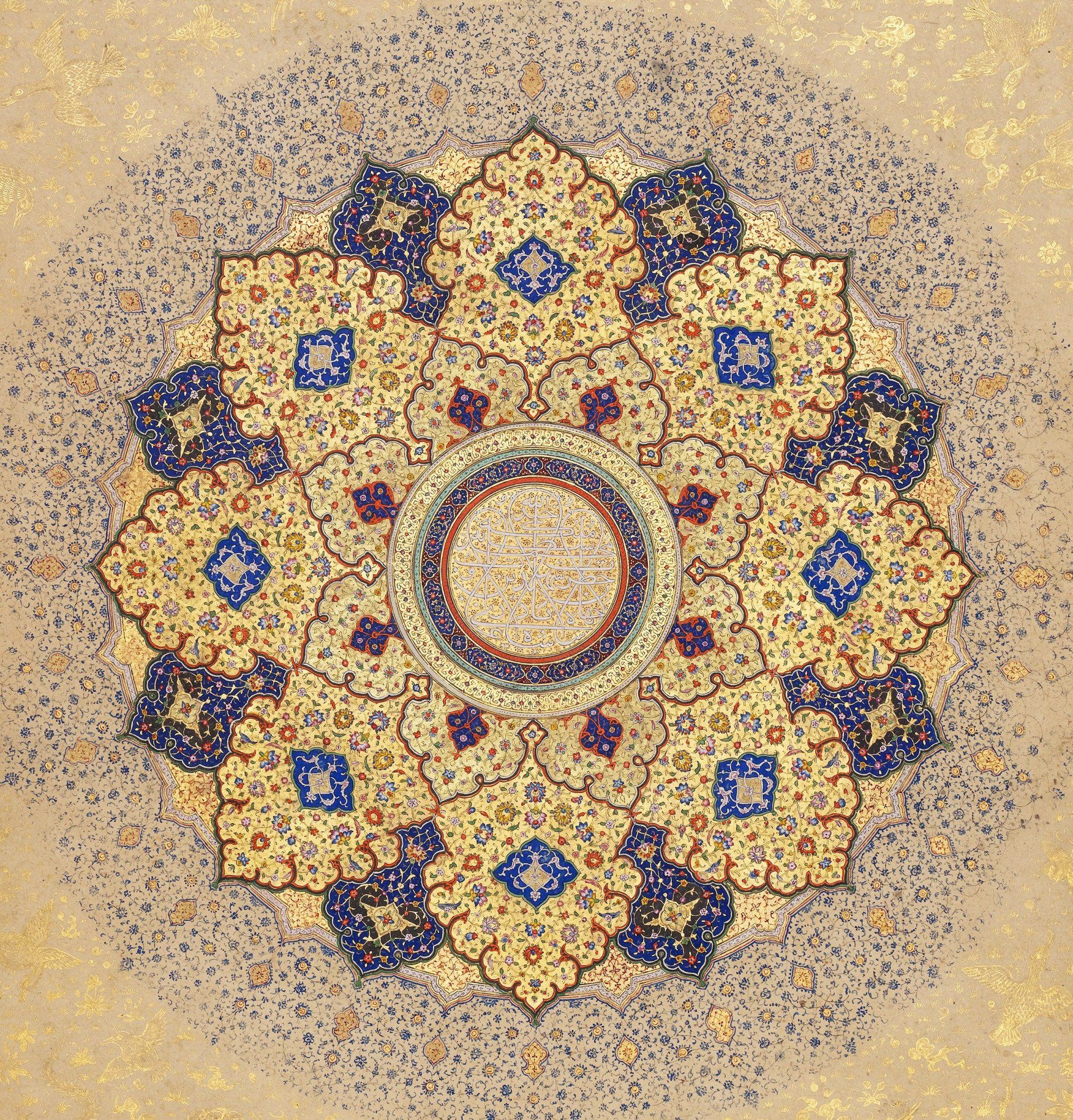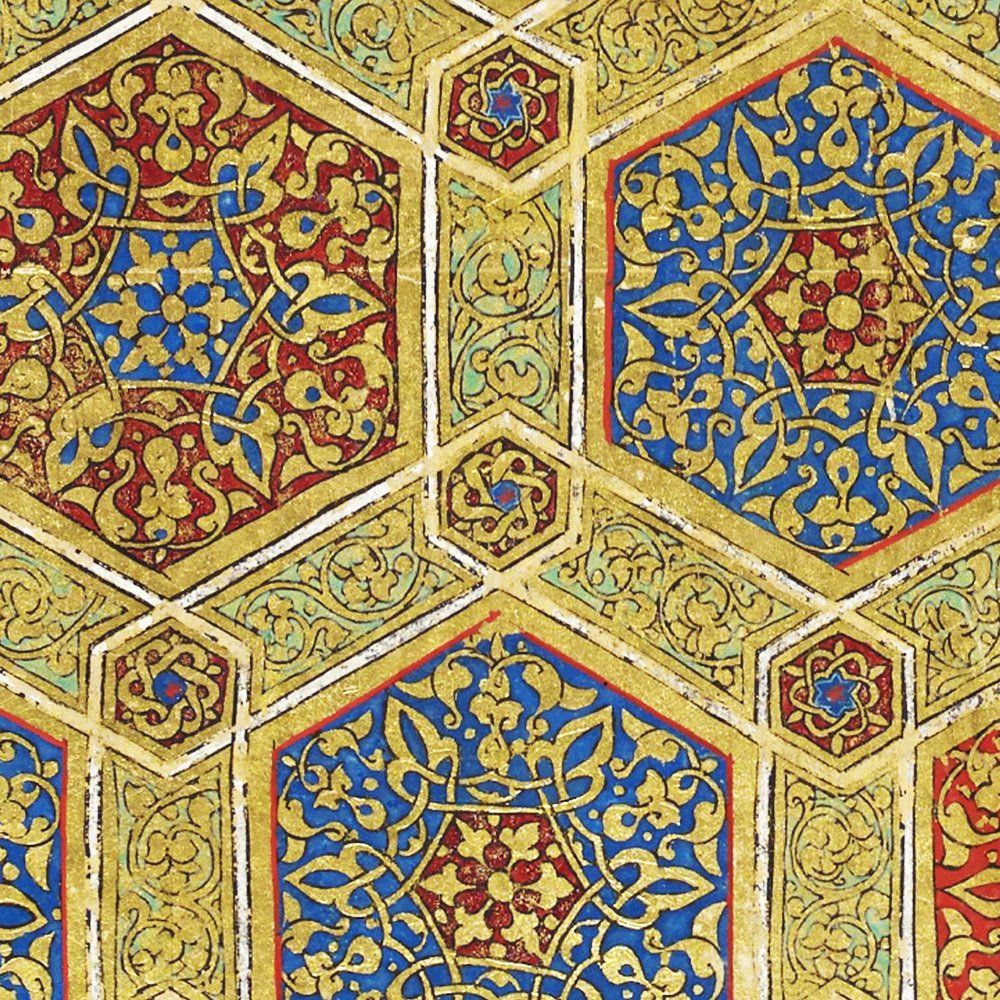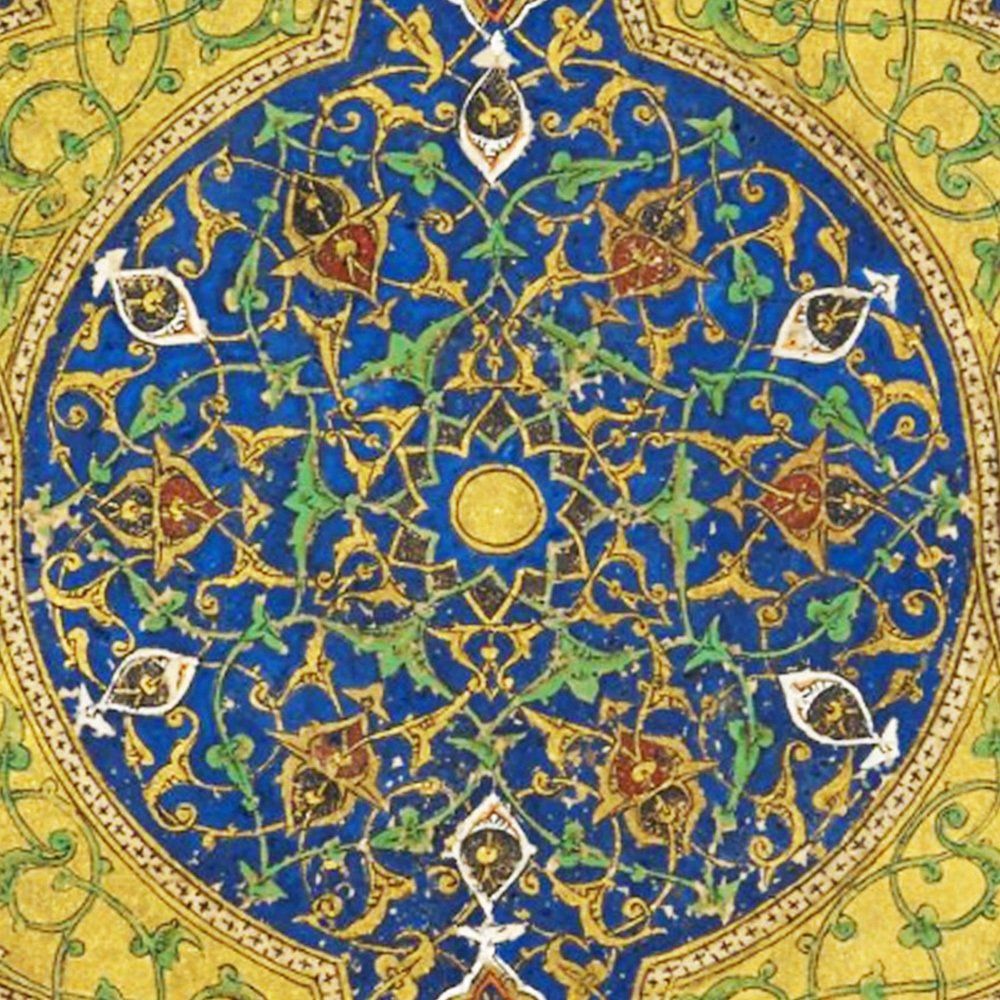ARCHIVE OF AVAILABLE LECTURES
Archived Lectures, Available by Request. Please click on images for a Summary.
PERSIAN ILLUMINATION AND DESIGN
Read the article below to find out more
ARTICLE

Image Credit: Shamsa Rosette bearing the names and titles of Shah Jahan, from the Shah Jahan Album,
Metropolitan Museum of Art
Persan Illumination has a "Wow" factor that draws you into its beauty and intricacy. The masterpiece above was made in the Imperial ateliers of Mughal India, around 1630 - 40, and represents one of the finest achievements in this genre. We call it 'Persian' because this art developed in the royal workshops of Iran and its neighbours over the previous three centuries. It is likely that this rosette was painted by a master illuminator trained in Iran, who had joined the Mughal court of Northern India.
The story of how Classic Persian Illumination developed may be traced back to the Mongol invasions of Iran and Iraq in the second half of the 13th century. The new Mongol rulers, or Ilkhanids, set up their centres of book production in Northern Iraq, Iran, and Azerbaijan, with many of the masters that had been requisitioned from the libraries of the Caliphs of Baghdad, which the Mongols had destroyed.
The art of Islamic illumination began to undergo a process of refinement, bringing in eclectic influences from Qur'anic design under the early Caliphs, existing patterns based on the scrolling Arabesque, and new influences from the Far East. After the Ilkhanid Empire broke up, the master calligraphers and illuminators of the library workshops continued to preserve and develop their art in the service of new patrons, thus maintaining their precious chains of transmission.
The illuminated chapter heading below comes from a manuscript made in Herat, at the royal libraries of the Timurid rulers. During the 15th century the art of book design and illumination in the royal ateliers followed a systematic process. The layout and design of the illuminations were carefully considered, and a recognizable design grammar emerged, incorporating a distinctive repertoire of elements and motifs. We see examples of astounding virtuosity in the art of the illuminator, and it is tempting to speculate if this coincided with the introduction of spectacles and magnifying glasses.
The chapter-heading has a title-box containing a cartouche for the title, and a delicate frieze ending in extensions like spears against a gold ground. The colour palette is dominated by precious lapis lazuli blue and pure gold.
In our lecture series we examine the evolution of design elements in some detail, looking at how they originated, how they were put together, and how they were coloured. We reference some fascinating Persian treatises that have survived from the 15th and 16th centuries, which along with high resolution images from the museums databases, giving us an insight into how the masters worked to produce these exquisite masterpieces.

Image Credit: Detail of a chapter heading from a Timurid copy of the Histories of Bal'ami, made in 1470 at the royal workshops of Herat, Chester Beatty Library.


